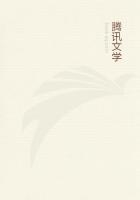
第10章
[19] i.e. "the dogs have turned her head and made her as mad as a March hare."In reclining the hare draws up the thighs under the flanks,[20] putting its fore-legs together, as a rule, and stretching them out, resting its chin on the tips of its feet. It spreads its ears out over the shoulder-blades, and so shelters the tender parts of its body; its hair serves as a protection,[21] being thick and of a downy texture. When awake it keeps on blinking its eyelids,[22] but when asleep the eyelids remain wide open and motionless, and the eyes rigidly fixed; during sleep it moves its nostrils frequently, if awake less often.
[20] Pollux, v. 72.
[21] Or, "as a waterproof." [22] So Pollux, ib.
When the earth is bursting with new verdure,[23] fields and farm-landsrather than mountains are their habitat.[24] When tracked by the huntsman their habit is everywhere to await approach, except only in case of some excessive scare during the night, in which case they will be on the move.
[23] "When the ground teems with vegetation." [24] Or, "they frequent cultivated lands," etc.
The fecundity of the hare is extraordinary. The female, having produced one litter, is on the point of producing a second when she is already impregnated for a third.[25]
[25] Re hyper-foetation cf. Pollux, v. 73, ap. Schneid.; Herod. iii. 108; Aristot. "H. A." iv. 5; Erastosthenes, "Catasterism," 34; Aelian, "V. H." ii. 12; Plin. "N. H." vii. 55.
The scent of the leveret lies stronger[26] than that of the grown animal. While the limbs are still soft and supple they trail full length on the ground. Every true sportsman, however, will leave these quite young creatures to roam freely.[27] "They are for the goddess." Full-grown yearlings will run their first chase very swiftly,[28] but they cannot keep up the pace; in spite of agility they lack strength.
[26] Cf. Pollux, v. 74.
[27] {aphiasi}, cf. Arrian, xxii. 1, "let them go free"; Aesch. "P. V." 666; Plat. "Prot." 320 A.
[28] Or, "will make the running over the first ring."To find the trail you must work the dogs downwards through the cultivated lands, beginning at the top. Any hares that do not come into the tilled districts must be sought in the meadows and the glades; near rivulets, among the stones, or in woody ground. If the quarry makes off,[29] there should be no shouting, that the hounds may not grow too eager and fail to discover the line. When found by the hounds, and the chase has begun, the hare will at times cross streams, bend and double and creep for shelter into clefts and crannied lurking-places;[30] since they have not only the hounds to dread, but eagles also; and, so long as they are yearlings, are apt to be carried off in the clutches of these birds, in the act of crossing some slope or bare hillside. When they are bigger they have the hounds after them to hunt them down and make away with them. The fleetest-footed would appear to be those of the low marsh lands. The vagabond kind[31]
addicted to every sort of ground are difficult to hunt, for they know the short cuts, running chiefly up steeps or across flats, over inequalities unequally, and downhill scarcely at all.
[29] Or, "shifts her ground."
[30] Or, "in their terror not of dogs only, but of eagles, since up to a year old they are liable to be seized by these birds of prey while crossing some bottom or bare ground, while if bigger . . ."[31] {oi . . . planetai}, see Ael. op. cit. xiii. 14.
Whilst being hunted they are most visible in crossing ground that has been turned up by the plough, if, that is, they have any trace of red about them, or through stubble, owing to reflection. So, too, they are visible enough on beaten paths or roads, presuming these are fairly level, since the bright hue of their coats lights up by contrast. On the other hand, they are not noticeable when they seek the cover of rocks, hills, screes, or scrub, owing to similarity of colour. Getting a fair start of the hounds, they will stop short, sit up and rise themselves up on their haunches,[32] and listen for any bark or other clamour of the hounds hard by; and when the sound reaches them, off and away they go. At times, too, without hearing, merely fancying or persuading themselves that they hear the hounds, they will fall to skipping backwards and forwards along the same trail,[33] interchanging leaps, and interlacing lines of scent,[34] and so make off and away.
[32] Cf. the German "Mannerchen machen," "play the mannikin." Shaks. "V. and A." 697 foll.
[33] Passage imitated by Arrian, xvi. 1.
[34] Lit. "imprinting track upon track," but it is better perhaps to avoid the language of woodcraft at this point.
These animals will give the longest run when found upon the open, there being nothing there to screen the view; the shortest run when started out of thickets, where the very darkness is an obstacle.
There are two distinct kinds of hare--the big kind, which is somewhat dark in colour[35] with a large white patch on the forehead; and the smaller kind, which is yellow-brown with only a little white. The tail of the former kind is variegated in a circle; of the other, white at the side.[36]